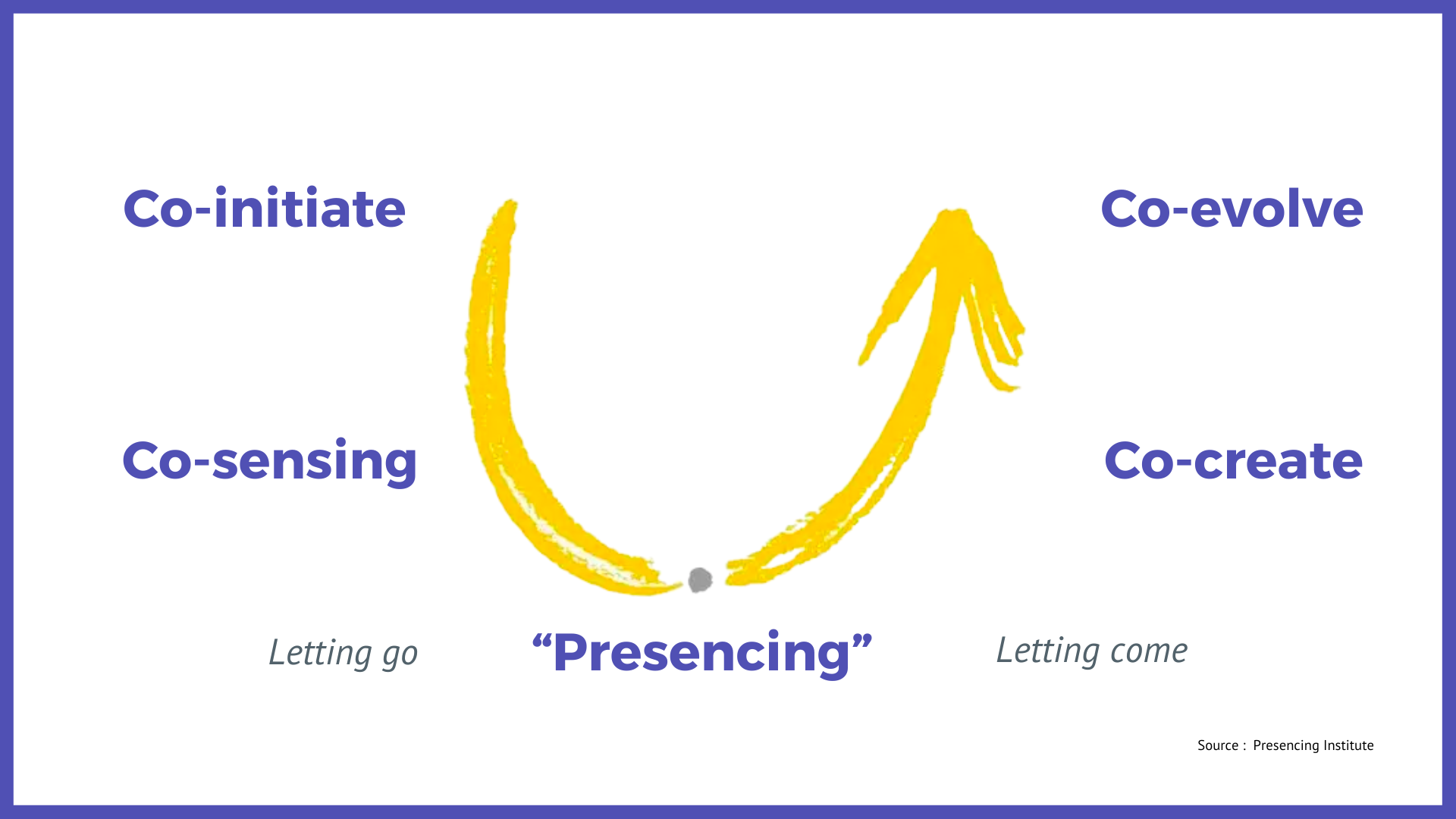To save colors and take care of the planet, print this text in shades of gray
Theory U in a nutshell
Reconnecting with our intelligences to collectively imagine the future
Théorie
Introduction
“Theory U” is in fact a meta-model for supporting individual and collective transformations. In an increasingly complex environment, this process, based on listening and observation, provides an opportunity to detach from past experiences and work on limiting beliefs to identify new and customised drivers of transformation. Without judgment or preconceived ideas.
Too often, we set goals that are in fact responses to symptoms. With Theory U, we change the paradigm to search for the root causes of a situation, align our intention with it and generate innovative solutions. We do this with our head, heart and body.
Nathalie Nowak, Imfusio
Description
Based on the work of Friedrich Glasl and Dirk Lemson, Otto Scharmer, lecturer at MIT and founding president of ELIAS (Emerging Leaders for Innovation Across Sectors), popularised Theory U in the 2000s with his book of the same name. It is based on a process with five main phases.

- Co-initate
Building a common intention around a highly challenging project, with the desire to involve as many people as possible. - Co-sensing
Listen to yourself, your body and the other person to understand the environment you are in. Observing points of view, perceptions, and feelings, even those that are disturbing, is one of the keys to this phase. - “Presencing”
Create a free space where you are available to yourself and others to let go of your habits, fears, preconceived ideas and enable solutions to surface naturally.
This state of “presencing”, a mixture of perception and presence, is promoted by individual introspection (silence, journaling, interactive walking, drawing, music) and creative approaches in groups (e.g. visual projection of the desired project, Social Presencing Theater, 20 minute dance, 4D mapping, etc.). It allows us to become aware of our belonging to a whole.
- Co-create
Prototype a first draft with your own hands, a small-scale version of what could be deployed in the future. - Co-evolve
Deploy what has been tested as a prototype on a larger scale by integrating it in a suitable real-life context, with the right stakeholders, to make it the new normal.
As William O’Brien, former CEO of Hanover Insurance Company, points out, “the success of an intervention depends on the interior condition of the intervener.” This is the importance of an approach that integrates emotional intelligence.
Tips and Advice
To learn more, get a copy of Essentials of Theory U in English.
To access all the tools and practices behind Theory U, visit the Precensing Institute website: u-school.org/presencing